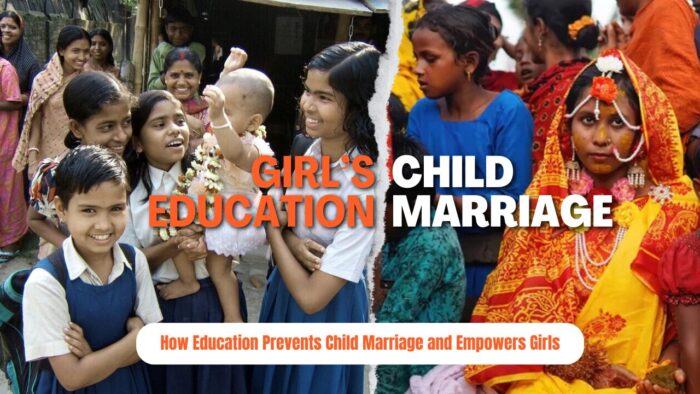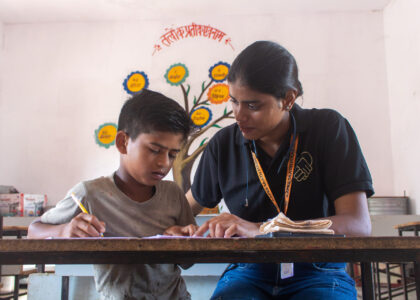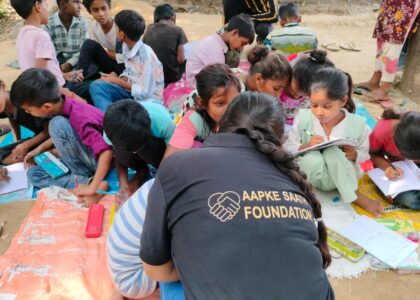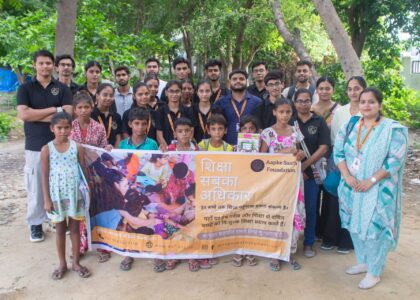Girl’s Education and Child Marriage

The Role of Girl’s Education in Preventing Child Marriage
Girls’ education is one of the most powerful tools for preventing child marriage and empowering young girls. By equipping girls with the knowledge and skills to make informed decisions, education for girls allows them to break free from the cycle of poverty and marry later in life.
1. Delaying Child Marriage through Education for Girls
Education plays a critical role in delaying child marriage. Girls who stay in school are less likely to marry young and more likely to pursue their dreams of personal growth and financial independence.
- Girls’ education helps young girls understand the responsibilities of marriage and childbearing.
- Studies show that girls who complete secondary education are significantly less likely to marry before the age of 18.
- Education for girls increases their awareness of legal rights, empowering them to resist societal pressure for early marriage.
By encouraging girls’ education, we are effectively reducing the incidence of child marriage.
2. Reducing Economic Pressures and Preventing Child Marriage
In many areas, families marry off daughters to ease financial burdens. However, girls’ education provides young girls with the skills needed to gain higher-paying jobs, reducing the economic pressures that often lead to child marriage.
- Girls’ education helps families see their daughters as valuable assets capable of contributing to the household income.
- Every additional year of schooling increases a girl’s income potential, further reducing the need for early marriage.
Educated girls are less likely to be pushed into child marriage due to financial struggles.
3. Challenging Harmful Cultural Norms to Prevent Child Marriage
Girls’ education challenges harmful cultural norms and societal expectations that encourage child marriage.
- Educated girls are more likely to resist traditional views that expect them to marry young.
- Education for girls teaches gender equality and personal autonomy, enabling them to advocate for their rights and delay marriage.
By fostering a culture of education for girls, we challenge the harmful norms that promote child marriage.
4. Improving Health Outcomes and Reducing Risks of Early Marriage
Child marriage often leads to serious health risks, including complications during pregnancy. Girls’ education helps mitigate these risks by teaching girls about sexual health, family planning, and contraception.
- Educated girls are more likely to delay pregnancy and avoid early childbirth, which poses significant health risks.
- According to the World Health Organisation (WHO), girls aged 15-19 are twice as likely to die from pregnancy-related complications as older women.
By focusing on girls’ education, we can significantly reduce the health risks linked to child marriage.
5. Building Confidence and Leadership through Girls’ Education
Girls’ education plays a key role in building self-confidence and leadership skills. When girls are educated, they are more likely to stand up for their rights and resist early marriage.
- Education for girls nurtures critical thinking, which helps girls make better decisions about their futures.
- Educated girls are more likely to become leaders in their communities, advocating for the end of child marriage.
By empowering girls with education, we are helping them gain the confidence needed to delay marriage and pursue their goals.
6. Opening Pathways to Opportunities for Girls
Education for girls opens doors to higher education, vocational training, and career opportunities. By staying in school, girls are more likely to secure stable, well-paying jobs and gain financial independence.
- Girls’ education leads to economic stability and allows girls to break free from child marriage.
- Educated girls become role models, showing others that education for girls can provide a path to success beyond early marriage.
One child, one teacher, one book, and one pen can change the world.
– Malala Yousafzai
Government Programs Supporting Girls’ Education and Preventing Child Marriage
Several government programs in India promote girls’ education and child marriage prevention:
- Beti Bachao Beti Padhao (BBBP) – A program that focuses on girls’ education and empowerment.
- Sukanya Samriddhi Yojana (SSY) – A savings scheme that supports girls’ education.
- Kasturba Gandhi Balika Vidyalaya (KGBV) – Provides free schooling for underprivileged girls to help prevent child marriage.
- NSIGSE – Financial assistance to support girls in secondary education.
These initiatives ensure that education for girls is prioritised, helping delay child marriage.
Child Marriage Prevention Programs
India also has laws and schemes in place to prevent child marriage and ensure girls’ education:
- Child Marriage Prohibition Act (2006) – Declares child marriage illegal.
- Balika Samridhi Yojana (BSY) – Provides financial support to delay marriage.
- Apni Beti Apna Dhan (ABAD) – Offers cash rewards to families who delay their daughters’ marriage until they turn 18.
- Childline 1098 – A helpline to report and prevent child marriage.
These laws and programs ensure protection and support for girls, helping them stay in school and avoid early marriage.
Conclusion: Education Is the Key to Ending Child Marriage
Girls’ education is the most effective tool to prevent child marriage. It provides girls with the knowledge and skills they need to delay marriage, stay healthy, and achieve economic independence.
To end child marriage, we need to invest in girls’ education, enforce laws against early marriage, and provide the necessary support. Together, we can help millions of girls break free from the cycle of child marriage and create a brighter future for all.
As Malala Yousafzai said, “One child, one teacher, one book, and one pen can change the world.”
Frequently Asked Questions (FAQ)
Education gives girls knowledge, confidence, and life skills. Educated girls are more likely to delay marriage, understand their rights, and focus on building a better future.
As per the Prohibition of Child Marriage Act, 2006, the legal age is 18 for girls and 21 for boys.
Many families face poverty, social pressure, or a lack of awareness. They see marriage as a way to reduce financial burden. Education changes this mindset by empowering girls economically and socially.
Child marriage can lead to early pregnancy, health risks, school dropout, domestic violence, and loss of freedom and opportunities.
Yes, schemes like Beti Bachao Beti Padhao, Kasturba Gandhi Balika Vidyalaya, and Sukanya Samriddhi Yojana support girls’ education and empowerment.
Support girls’ education, report child marriages via Childline 1098, raise awareness, and donate to NGOS working to end child marriage.




